10 Ways to Make Your Space Feel Bigger

Your home is your haven, you’ve fallen in love with its design features, its kooky character and the way it always feels like home. However sometimes you want more, and that’s okay. Here we show you how to make your space feel bigger with a bunch of tips and tricks for how to increase the size of your living space without having to move.
Playing With Space
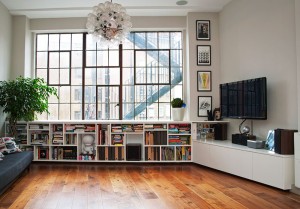
Space is such an important factor at home, and with the prospect of buying a bigger house sometimes out of reach, it’s important to be able to make the most of what you’ve already got.
Playing with the space in your home can allow you to get really creative; its’s an exciting way to unleash your personality on your home, with some stylish results.
We’re going to talk you through how to create the illusion of more space in your home, from adding tricks with colours, shapes and patterns to introducing lights and mirrors – your home is going to look spacious and super stylish!
Using Light
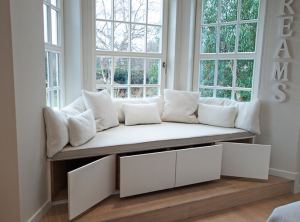
Light is a central element when it comes to styling your home, it can add great height and space, offering a bright an airy feel to a room. How you play around with lighting can bring many other benefits to your space, too.
Lighting is split into two different types: task lighting and decorative lighting. Both play fundamental roles in the way you use your space and how it looks:
Task Lighting
These are the lights that you need to highlight certain tasks you’re doing. Most living rooms, for example, will have overhead lights to brighten the entire room.
Decorative Lighting
These lights add more ambience to a room, be it using table or floor lamps. They add a soft glow to any space, and are best reserved for creating a cosy feel.
Others
Then, of course, there’s natural lighting. If you’ve got plenty of windows that allow light to flood in, your space will appear larger and brighter – especially if you’ve got a south-facing room that has the light most of the day.
If your home doesn’t have much natural lighting, well-placed task and decorative lights can help achieve the same effect.
Large, directional lights are great for drawing the eye away from certain areas; they cast lighting into and all around the room.
Uplighters are also great for adding a bright feature light to the room.
Furniture
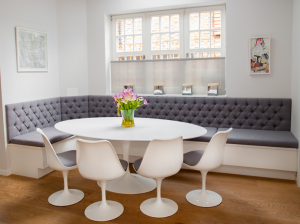
You don’t have to opt for the minimalist look just to create space – this is a common misconception. Yes, it will give the physical illusion of more space if you’ve got the bare essentials in a room, but if you like to have a bit more on display, all you need to do is get clever with your furniture.
Position your sofa slightly away from the wall to create the impression of space. We found that most people that wanted to create space would push their sofa right up against the wall, thinking that this would capitalise on every morsel of space in the room, but it actually creates a cluttered vibe.
‘Florating’ furniture is great for keeping the space flowing, but it also allows you to see the space and flooring underneath, which naturally makes the eye think there is more space available.
This works with sofas, too. Sofas that are on legs rather than resting directly on the ground appear less heavy, respecting the natural flow of a room.
Colour
Colour is a big player in the space stakes, and neutrals are by far the most valuable. Far from the humdrum magnolia wall, these soft, understated and easy-going tones can work as a stand-alone colour scheme or as a clean backdrop to your personal style.
Whether your interiors are contemporary or traditional, these comforting and relaxing shades can really open up the room whilst adding touches of warmth throughout.
If you’d prefer a darker shade, duck egg or charcoal can add drama, style and space to your room.
Pantone, Dulux and Crown all have wide ranges of these beautiful basics that will transform the look of your room.
Reflection
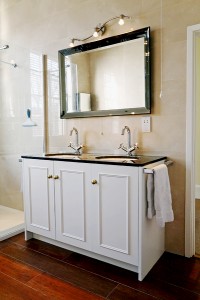
If you’re really stuck for space, a great way to trick the eyes into thinking the area is bigger is with mirrors. This technique helps the room look twice its size by reflecting your current layout back into the room.
If you’ve got long, slim mirrors, turn them on their side and mount them on the wall. The wide, vertical shape and the reflection of the mirror will both give the impression of space. Floor-length mirrors are another great way to make a space feel larger. The length draws the eye up, creating height, and if you get an extra wide one, you’re adding both height and width.
If you place a mirror on the opposite wall to a window, it will make it look as though you’ve got windows on both sides, flooding the room with natural light. So if your home is lacking in sky-high ceilings and soaring windows, there really is nothing better than a well-positioned mirror.
Did you know? The bigger the mirror, the bigger it will make the space look.
Top Tip
Pop your mirror behind a light – candles work particularly well – as this will help maximise the reach of the lights.
Curtain Call
Curtains have a bigger impact on a room than you may think, and the way they are hung can make or break a room, so it’s important to consider curtains when you’re styling your home.
Interior designers rejoice when curtains are well hung, and if you’ve managed to hang them correctly you’ll never go back to the way things were before.
To help create height, hang above the frame and wider than the frame with curtains that are longer than the windowsill: ideally, curtains should end at the floor. Any shorter and you will make the window look short and stumpy.
A common mistake is to have curtains that end at the window itself. This draws the eye to the centre of the wall, and the area feels too compact and busy. Add long, flowing curtains for a romantic and relaxed feel; these will attract the eye continuously to the end of the material, making the wall and windows look longer.
Shapes
Whilst patterns can sometimes be overbearing and too fussy, they can also open up a space if used correctly. No longer will you have to live with plain walls to create space: large patterns work better than small, intricate details in a room that’s tight on space.
If you really want to play with illusion, stripes can be your best friend. Wide, horizontal stripes can elongate the room, making it appear wider, whilst vertical stripes can help add height.
Don’t be afraid to create a feature wall if you really want one, but be aware of other designs and patterns in your room. If your feature wall has a pattern, try to tie the same pattern and colour into other areas of the room to complete the look neatly.
Declutter
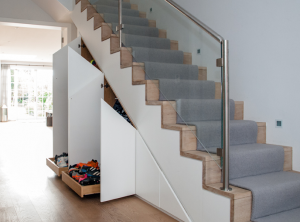
It may feel like an obvious one, but declutter the room and this will help create a streamlined feel in any space. Remove any unnecessary mess and areas that build up with clutter easily.
For instance, your coffee table shouldn’t hold weeks’ worth of post as well as magazines, candles and flowers; choose one or two stand-out pieces and allow them to do the stylish work for you.the likelihood of causing any unwanted damage to your piece, and gives you more time to relax and enjoy your purchase.
Eye, Eye, Eye
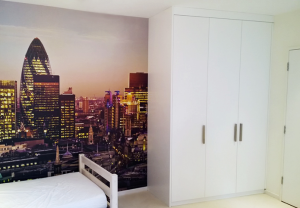
Creating the illusion of space with interior design is all about playing tricks on the eye. You want to focus the eye’s attention away from certain parts of the room and towards others. If you want to draw the eyes up, creating the element of height, you can add shelving closer to the ceiling, or tall, slender canvases on the wall.
Flooring
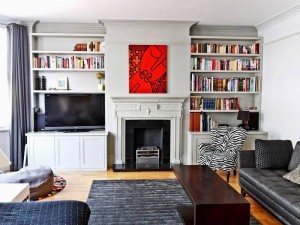
It’s easy to forget the flooring when thinking about decluttering and styling your room but it’s a really important element to your interior design. Light floors will help create space and light in the same way that light walls will help the area, but dark wooden floors also help to give the illusion of more space, if you keep the rest of your furniture light in colour and simple in texture, you’ll find that you can still achieve a clean and simple affect to your interiors.
Surprisingly, rugs can also help create the illusion of space, as long as they are the right size for the room – usually, the bigger the better!
If you have any other ways to create light and space in your home, please let us know in the comments.
Don’t forget, you can download this blog into a helpful and handy PDF so you’ve always got it to hand.
C&S_User Guide_10 Ways to Create Space
« back






